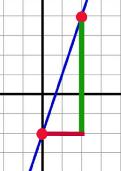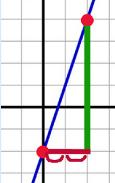|
|||||||||||||||||||||||||||||||||||||||||||||||||||||||||||||||||||||||||||||||||||||||||||||||||||||||||||||||||||||||||||||||||||||||||||||||||||||||||||||||||||||||||||||||||||||||||||||||||||||||||||||||||||||||||||||||||||||||||||||||||||||||||||||||||||||||||||||||||||||||||||||||||||||||||||||||||||||||||||||||||||||||||||||||||||||||||||||||||||||||||||||||||||||||||||||||||||||||||||||||||||||||||||||||||||||||||||||||||||||||||||||||||||||||||||||||||||||||||||||||||||||||||||||||||||||||||||||||||||||||||||||||||||||||||||||||||||||||||||||||||||||||||||||||||||||||||||||||||||||||||||||||||||||||||||||||||||||||||||||||||||||||||||||||||||||||||||||||||||||||||||||||||||||||||||||||||||||||||||||||||||||||||||||||||||||||||||||||||||||||||||||||||||||||||||||||||||||||||||||||||||||||||||||||||||||||||||||||||||||||||||||||||||||||||||||||||||||||||||||||||||||||||||||||||||||||||||||||||||||||||||||||||||||||||||||||||||||||||||||||||||||||||||||||||||||||||||||||||||||||
|
||||||||||||||||||||||||||||||||||||||||||||||||||||||||||||||||||||||||||||||||||||||||||||||||||||||||||||||||||||||||||||||||||||||||||
Sometimes you know two coordinate pairs (the name of the points) and need to find the slope. ARGH! What to do? It's all arithmetic, my dear! Check it out… Let's say these are your points: |
||
|
||||||||||||||||||||||||||||||||||||||||||||||||||||||||||||||||||||||||||||||||||||||||||||||||||||||||||||||||||||||||||||||||||||||||||||||||||||||||||||||||||||||||||||||||||||||||||||||||||||||||||||||||||||||||||||||||||||||||||||||||||||||||||||||||||||||||||||||||||||||||||||||||||||||||||||||||||||||||||||||||||||||||||||||||||||||||||||
|
|||||||||||||||||||||||||||||||||||||||||||||||||||||||||||||||
 |
||||
Step 1: Use inverse operations to move terms on the y side over to the OTHER side. |
||||
Step 2: Finish solving the equation for y. Divide the coefficient in front of the y by both sides of the equation. |
||||
 |
||||
Step 3: Check to be sure the equation is in the correct form: y = mx + b If necessary, re-arrange the terms (good ol' commutative property!). That's it! |
||||||
becomes |
||||||
And you thought you knew all there was to know about slope! Ha! Direct variation is an unchanging, constant ratio that goes with the mathematical statement, "y varies directly as x." Huh? In plain English, this means that when x changes, y changes by the same ratio. Whew! Now, it can be expressed by a formula (of course!) in two ways, with k as the constant. |
||
|
||||||||||||||||||||||||||||||||
Since k is the constant and is always the same, never changing for each point, you can find it quite easily. It is a simple division problem! Yep, that's right! Think about it for a second… What would you have to do if you had the following problem (comes from an Algebra book)? |
||
Is this equation a direct variation? If it is, find the constant of variation. |
||||
Step 1: Put the equation into your slope-intercept form Step 2: Look at the slope! That's it. Easy-peasy, lemon-squeasy! |
||||||||||
 |
||||||||||
Yes, this is a direct variation. Constant is 7.5 (slope is 7.5) |
||||||||||
Another way to look at the direct variation… To calculate the constant of variation, just find the slope! |
||||||||||
©2011–2017 Sherry Skipper Spurgeon. All Rights Reserved. |
||















